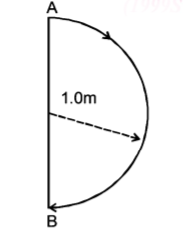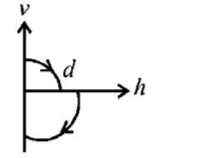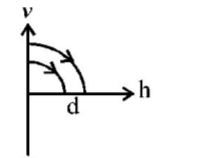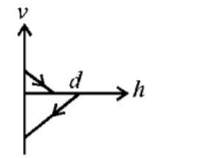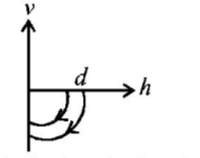Question
From a tower of height $$H,$$ a particle is thrown vertically upwards with a speed $$u.$$ The time taken by the particle, to hit the ground, is $$n$$ times that taken by it to reach the highest point of its path. The relation between $$H, \,u$$ and $$n$$ is:
A.
$$2gH = {n^2}{u^2}$$
B.
$$gH = {\left( {n - 2} \right)^2}{u^2}$$
C.
$$2gH = n{u^2}\left( {n - 2} \right)$$
D.
$$gH = \left( {n - 2} \right){u^2}$$
Answer :
$$2gH = n{u^2}\left( {n - 2} \right)$$
Solution :
Speed on reaching ground $$v = \sqrt {{u^2} + 2gh} $$

Now, $$v=u+at$$
$$ \Rightarrow \sqrt {{u^2} + 2gh} = - u + gt$$
Time taken to reach highest point is $$t = \frac{u}{g},$$
$$\eqalign{ & \Rightarrow t = \frac{{u + \sqrt {{u^2} + 2gH} }}{g} = \frac{{nu}}{g}\left( {{\text{from question}}} \right) \cr & \Rightarrow 2gH = n\left( {n - 2} \right){u^2} \cr} $$
Speed on reaching ground $$v = \sqrt {{u^2} + 2gh} $$

Now, $$v=u+at$$
$$ \Rightarrow \sqrt {{u^2} + 2gh} = - u + gt$$
Time taken to reach highest point is $$t = \frac{u}{g},$$
$$\eqalign{ & \Rightarrow t = \frac{{u + \sqrt {{u^2} + 2gH} }}{g} = \frac{{nu}}{g}\left( {{\text{from question}}} \right) \cr & \Rightarrow 2gH = n\left( {n - 2} \right){u^2} \cr} $$
